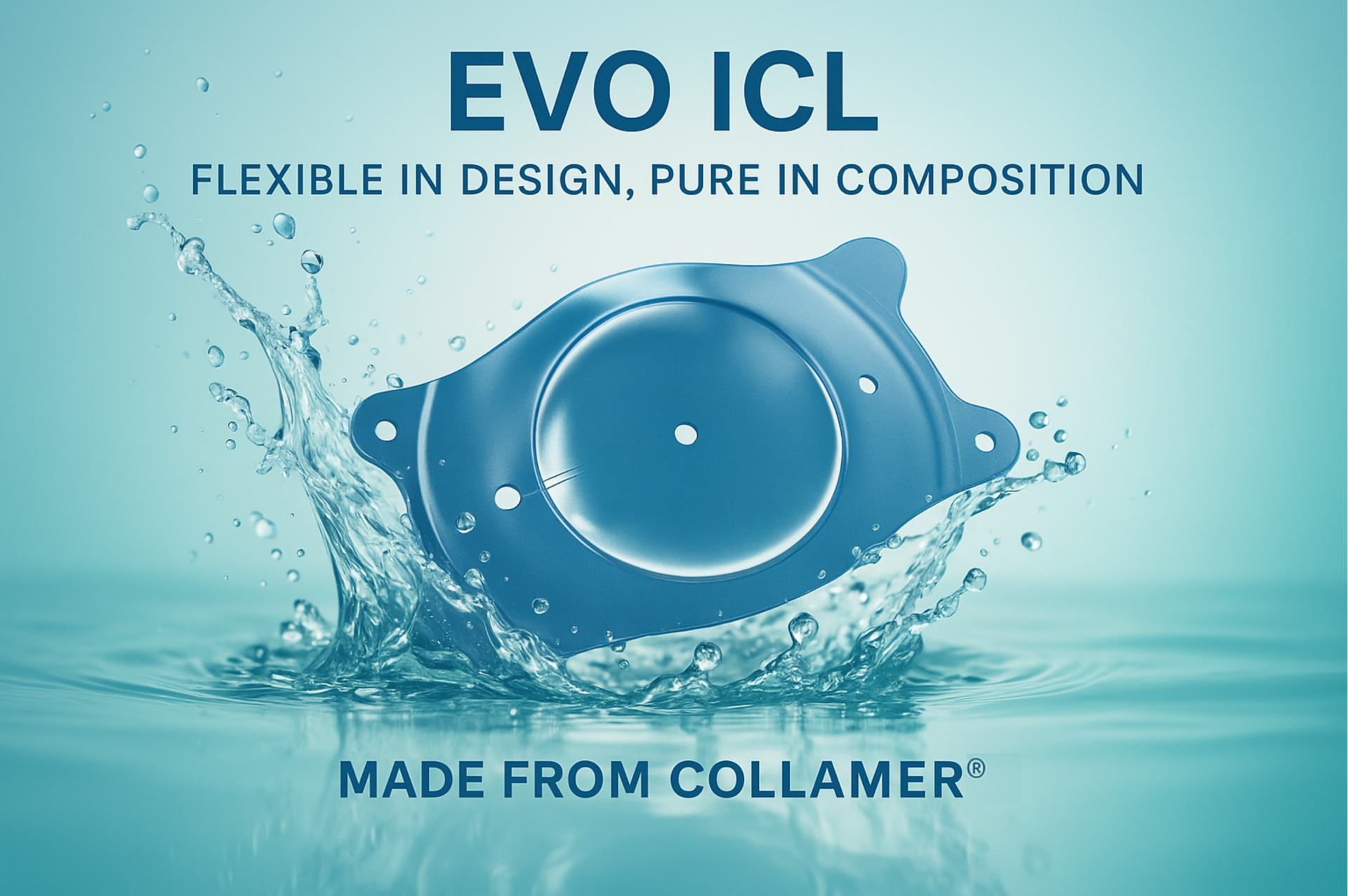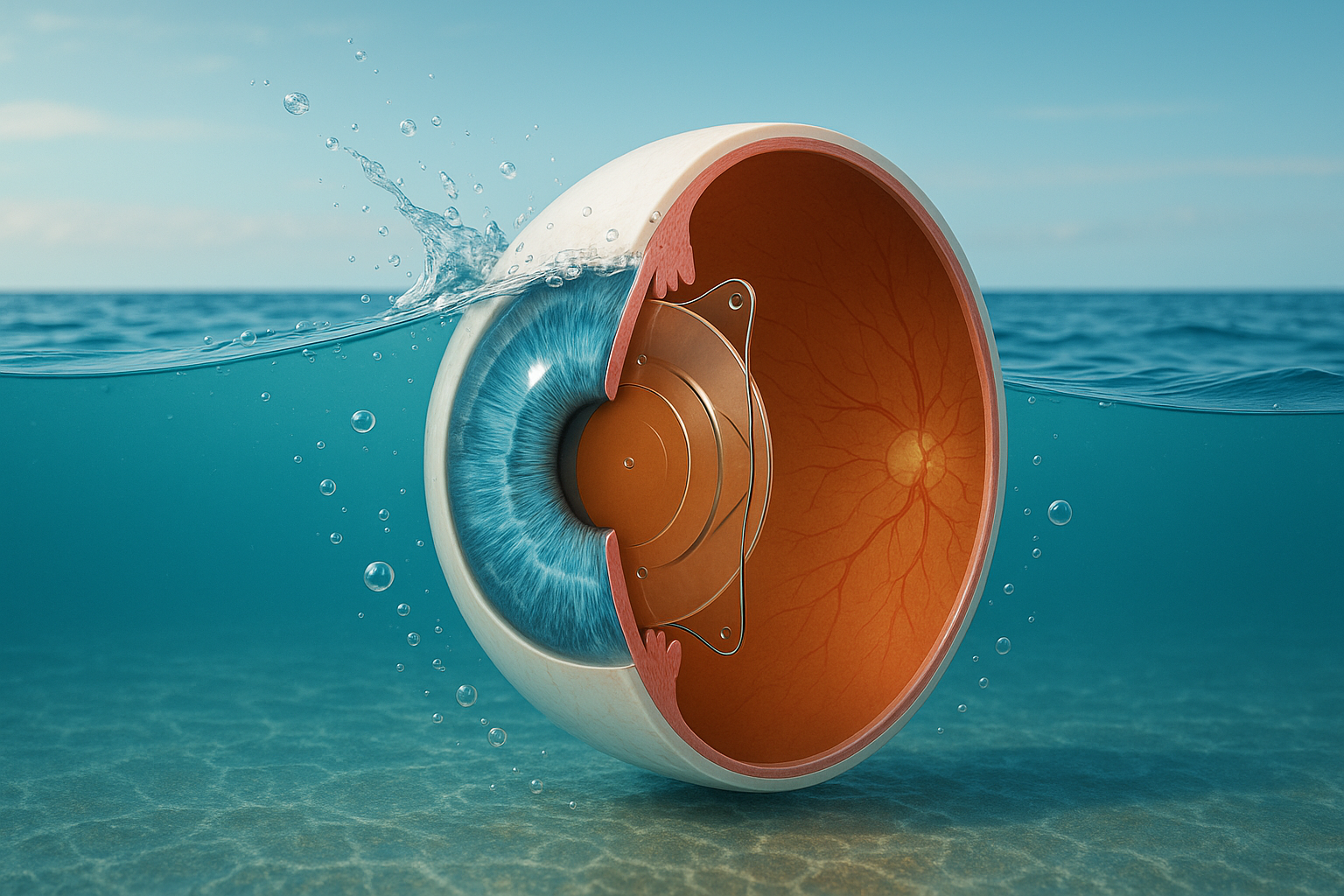Introduction
Over the past years, ophthalmology has witnessed a significant shift from invasive myopia treatments to gentler, safer solutions that offer more natural visual outcomes. One of the most remarkable advancements is the introduction of the Collamer® lens—a revolutionary technology in modern myopia correction, widely known through the Implantable Collamer Lens (ICL) and Phakic ICL (Phakic ICL) developed by STAAR Surgical.
What is the Collamer Lens?

Phakic ICL lens made from Collamer material, soft, flexible, and highly biocompatible
The Collamer Lens is an artificial intraocular lens made from Collamer™—a copolymer material that contains natural collagen. Thanks to its biologically compatible structure, Collamer works harmoniously with the body’s tissues, minimizing inflammation or rejection. It is a proprietary material used exclusively by STAAR Surgical—a Swiss-American company pioneering in intraocular lens technology—certified under the international medical quality standard ISO 13485.
The Collamer Lens is designed to be implanted inside the eye, positioned between the iris and the natural crystalline lens, without removing or reshaping the cornea as in laser surgeries such as LASIK or PRK. The lens is small, foldable, soft, flexible, and hydrated, and it also includes an ultraviolet (UV) filter. It can serve as a permanent vision correction solution—or remain in place until the patient wishes to have it removed. Therefore, this technique is considered a “non-corneal-invasive” approach, preserving the eye’s natural structure while offering safety and flexibility.
How the Collamer Lens Works
When light enters the eye, both the cornea and crystalline lens work together to focus it onto the retina. However, in people with myopia or astigmatism, light focuses in front of the retina, resulting in blurred vision.
The Collamer Lens acts as an additional “supplementary lens,” helping to refocus light precisely on the retina, providing clear and sharp vision without the need for glasses or contact lenses.
Key Advantages of the Collamer Lens

Eye structure simulation with a Collamer lens implanted between the iris and the crystalline lens
Compared with traditional vision correction methods, the Collamer Lens offers a range of outstanding benefits:
| Criteria | Collamer Lens (ICL/Phakic ICL) | LASIK/PRK Surgery |
|---|---|---|
| Corneal cutting | Not required | Required |
| Removability | Removable if needed | Irreversible |
| Dry eye risk | Minimal | Common |
| Suitable for thin corneas | Yes | Limited |
| UV protection | Yes | No |
| Night vision | Sharp, reduced glare | Possible halos or glare |
With its soft, flexible, and hydrated design, the Collamer Lens causes virtually no irritation and cannot be felt once implanted. Additionally, its UV-blocking property helps reduce the risk of cataracts later in life.
The Collamer Implantation Procedure – Gentle and Quick
Collamer Lens implantation (Phakic ICL surgery) is a 20–30 minute outpatient procedure that does not require hospitalization.
The basic steps include:
- Topical anesthetic eye drops are applied to ensure a painless experience.
- A tiny 3mm incision is made at the edge of the cornea.
- The Collamer Lens is folded and inserted through a special injector.
- Once inside, the lens unfolds and is precisely positioned between the iris and crystalline lens.
- No stitches are required—the micro-incision seals naturally due to the cornea’s elasticity.
- Most patients experience improved vision within a few hours and resume normal activities after 1–2 days.
Notes:
- If the patient needs to cough, sneeze, or move during surgery, they must inform the ophthalmologist immediately.
- For myopia correction only, the custom lens preparation takes about 2–3 weeks.
- For combined myopia and astigmatism correction, preparation may take 4–5 weeks.
Who Is a Good Candidate for the Collamer Lens?

Phakic ICL suitable for individuals seeking a safe, non-corneal-invasive, and quick recovery method
Collamer Lens surgery is particularly suitable for:
- Individuals aged 21–45 with myopia between –3.0D and –20.0D, and astigmatism from 1.0D to 4.0D.
- Those with thin corneas or dry eyes who are not eligible for LASIK.
- Patients with stable prescriptions for at least one year and no serious eye diseases such as glaucoma, cataracts, or diabetic retinopathy.
The Modern Myopia Treatment Trend: Non-Invasive, Biocompatible, and Personalized
While laser-based surgeries like LASIK, PRK, or SMILE remain popular, global trends are increasingly shifting toward cornea-preserving technologies such as Phakic ICL. According to STAAR Surgical, over 3 million Collamer Lenses have been distributed worldwide, with a 99.4% patient satisfaction rate and 20/20 or better vision achieved in nearly all cases.
This shift is driven not only by clinical outcomes but also by modern patients’ demand for aesthetics, fast recovery, and long-term safety. As a result, the Collamer Lens is regarded as the “non-invasive revolution” in myopia correction.
Risks and Considerations
Although considered a safe procedure, the Collamer Lens may carry minor risks such as:
- Temporary intraocular pressure increase after surgery.
- Mild postoperative irritation or nasal congestion.
- Rare complications: cataract formation, glare, or the need for lens repositioning.
All of these can be effectively managed when the procedure is performed by an experienced ophthalmologist and followed by proper postoperative monitoring.
In modern ophthalmology, the Collamer Lens has gone beyond being just a medical device—it represents a treatment philosophy that is non-invasive, natural, and tailored to each patient’s visual needs. With its biocompatibility, flexibility, and proven safety, Collamer has become a cornerstone technology in the new generation of myopia correction, allowing patients to regain clear vision without altering their corneal structure.
Most importantly, to ensure maximum safety and visual outcomes, Phakic ICL surgery should only be performed by a well-trained, experienced ophthalmologist in facilities equipped with advanced technology and international safety standards.

 vi
vi 10-Oct-2025
10-Oct-2025










 0916.741.763
0916.741.763 Appointment
Appointment